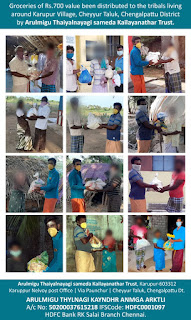Our trip to Hubli Dharwad area was planned two months ahead. We flew to Hubli and after attending a wedding reception drove to Badami by road the following day. We were advised to proceed further to Aihole first as Badami caves were very crowded that day. We reached Aihole by 10 30 am. We hired a guide Mr. Basvaraja who explained in great detail in English.
The tickets were just Rs 25 per person. The entire site is being preserved by the ASI. It was verdant and well kept.
Durga Temple, Aihole
We first entered the Durga temple complex. All temples in Aihole are built of Sandstone. Aihole was originally known as Aryapuram and was the capital of the Chalukyas for a while before it moved to Badami.
Aihole was a training centre for sculptors and they seemed to have practiced the art in this place. This line told by the guide impressed us. Aihole is Primary School, Badami is High School, Pattadakal is College while Hampi, Belur and Halebid are Universities.
The temple architecture as conceived had Ardha Mandapa, Mukka Mandapa, Sabha Mandapa, Garba Griha, Pradikshina Patha and Shikara (gopuram above the garbagriha) Aihole itself has about 125 temples.
Mahishasuramardhini
Ardhanareeswarar
Beautiful Hariharan Statue
Ramayan Panel
Social Life of the Chalukyan Period beautifully depicted
Pillars - Four stages of creation
First Stage
Second Stage
Third Stage
Final Stage
The Ceiling of Durga Temple.
The entrance to the Durga temple had various sculptures and 4 pillars depicting 4 stages of workmanship.
The doorway was ornate with dwarapalakas Jaya and Vijaya in the side with Garuda in the top centre with a huge serpent hanging on either side.
The main deity is missing. Probably never installed or stolen by invaders.
There was an excellent statue of a couple holding a baby. The side walls had statues of Lord Vishnu in Tribhanga pose.
Next to that statue is a statue of Vishnu seated on Garuda.
We took a pradakshina and noticed that the back of the garbagriha resembled the back of an elephant and also the shape of a horse shoe.
See pics and videos of other statues and descriptions.
Don't forget to see the ceiling panels. Vishnu encircled by Serpent draws special attention.
Vishnu and Garuda on outside Temple Wall:
The Shiva lingam shaped pond in Aihole
Opposite the Durga temple complex the pond shaped like the Shiva lingam is present. It had greenish water and was huge.
The museum was closed as it was a Friday so we missed seeing the sculptures inside.
Mythological Animal:
This is placed in front of the Museum. Artist's imagination going wild or did such animals existed in those days? It must be the former!
The Ladh Khan temple (Shiva Temple) 6th to 8th Century
When the guide mentioned about the name of this temple, I thought I misheard. What is the connection between Khan and Shiva! Looks like Ladh Khan made this temple as his residence and the guide believes (not sure) that he converted to Saivism. A broken Nandi is on the platform outside. The Shiva Lingam was housed in the Garba Griha and had a big Nandi which was in good condition facing the God. Interestingly this temple has a another level which houses Lord Vishnu. A steep, scary stone ladder takes you up to the next floor but it was closed and so we were unable to see it. This temple is next to the Durga Temple. Don't miss the log shaped stone carvings at the Garba Griha, the lattice carved windows which allows natural light in and the Chalukyan/Rashtrakuta trademark column pillars.
One common feature of temples in Aihole and probably all temples in this region are the sculptures of Royalty as well as commoners and some erotic sculptures too (called Mithuna) decorates the walls. The guide quizzed us, "Now tell me is this sculpture a queen or a goddess or a commoner?" The striking distinguishing feature is the jewels, simpler for commoners.
The Before/After Marriage Sculpture: Not sure if this was the guide's own interpretation...Tongue in cheek Sculpture or Reality of those days. Men will say Visionary sculpture!
Before Marriage, the scene is filled with Love. After marriage the woman is seen kicking the man!
Step Well: After seeing one more temple in this complex we walked to a Step Well. It had carved walls and seemed to be the source of water in the ancient times. Not as ornate and breathtaking as the one in Ahmedabad but still impressive enough to stare for a while imagining the lives of bygone kings and queens.
By now the sun was high up in the sky but it wasn't so hot as there was a light breeze. After clicking lots of pictures against the backdrop of the ruins, we moved our way out to go to the next place, but not before having a little pot of delicious curd sold by a local outside for Rs 10 per piece.











































